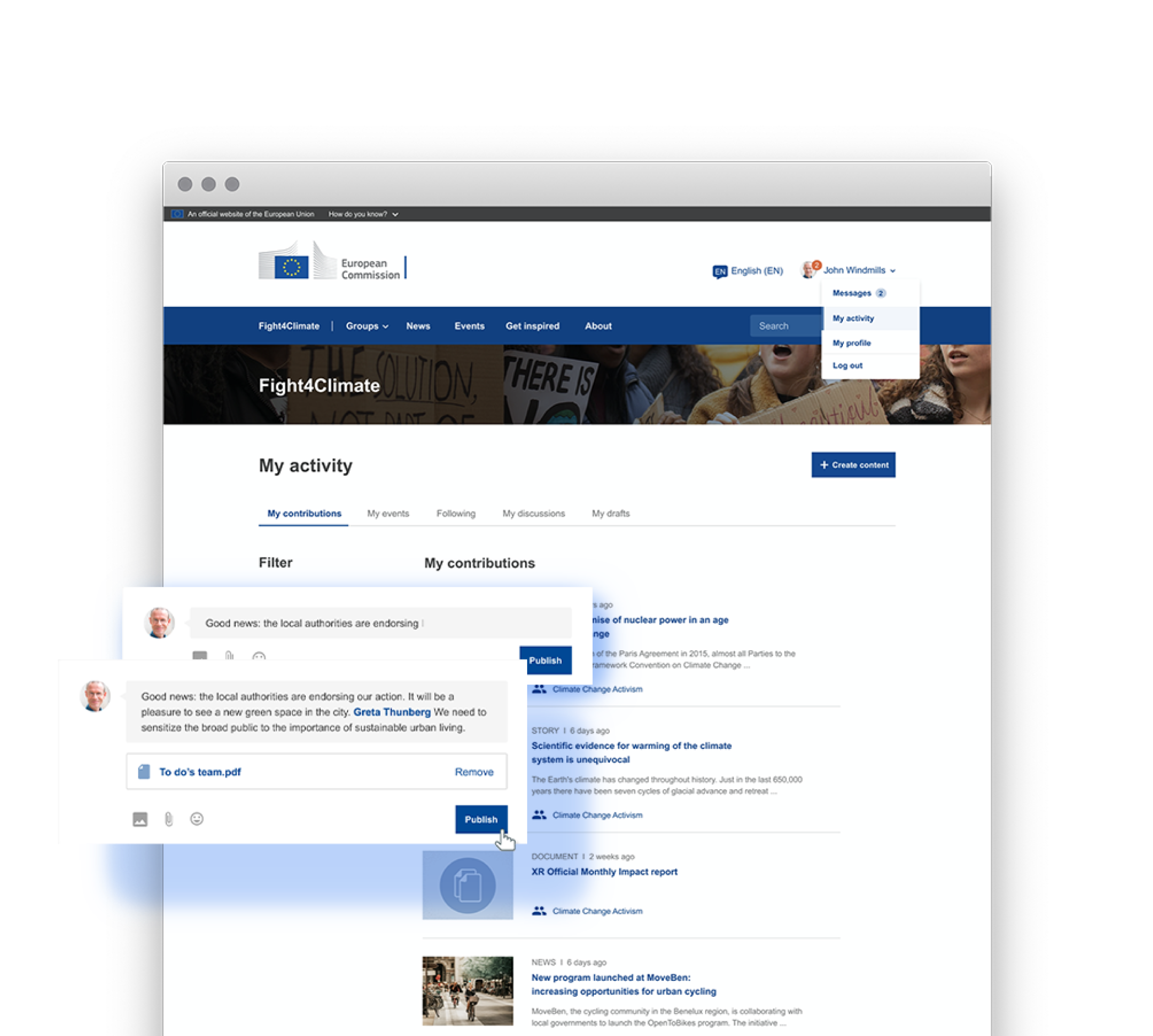EU Executive Agency for SMEs
Shaping a joint platform for community websites of the European Commission

Several departments and executive agencies of the European Commission needed to move their online community platforms to Drupal 8. Two such departments, the Directorate-General for Informatics (DIGIT) and the Executive Agency for Small and Medium-sized Enterprises (EASME), saw an opportunity to have the two groups work closer together and reached out to Namahn to lead this process in a combination of strategic and digital design.
| Client | Sector | LAnguage | Team |
|---|---|---|---|
| EISMEA | Public | English | 3 designers |
A shared need for transition
Many departments within the European Commission, called Directorate-General (DGs) or Executive Agencies (EAs), engage with their target audience via community platforms. These platforms encourage specific target audiences to connect, network and engage in joint projects, initiatives or knowledge sharing. Although these platforms have similar needs, they mostly have been developed independently by the different DGs.
In the framework of a mandatory transition to Drupal 8, DIGIT and a number of DGs and EAs decided to work together on the “OpenEuropa Communities” project whose intention is to design and develop a joint community platform which ensures consistency across the different community websites of the European institutions. This project is part of the OpenEuropa initiative by DIGIT to promote the adoption of open-source tools and practices for the web presence of European Institutions.
Namahn supported this transition for EASME, participating in the project as the design lead for its community platform for SMEs. Specifically, Namahn helped shape a digital strategy that could be translated into a concept containing detailed UI components. The design builds upon the existing Europa Component Library (ECL), extending it further with typical community-driven features to drive interaction.
Defining shared user requirements
As a first step, we facilitated a set of co-creation workshops with EASME and the participating Directorate-Generals to identify a joint vision for the future community platform. The collaborative process led to the definition of high-level user requirements, both functional and non-functional.

From a shared strategy to detailed components
To leverage the momentum generated by the first, strategic alignment between the variety of stakeholders, all key Directorate-Generals were involved in the subsequent steps of the conceptual and detailed design of the platform. We worked iteratively, regularly co-creating and confronting the design with all parties involved. The design, based on a fictional climate activist community, would act as an archetype for the development of the different community platforms.

To ensure consistency across the European community sites, the project team agreed to base the visual design on the style described in the Europa Component Library (ECL). As the library is made mainly for static, institutional informational websites, we needed to perform a gap analysis together with DG COMM, the DG in charge of this library. We then extended the existing library and introduced new components to support the more interactive, community-driven nature of the platform. This included discussion threads, commenting, replying, liking, and showing recent activity. As a result, we illustrated the detailed pages of the sample archetype platform, including the must-have functional requirements identified with all the involved DGs.
We prepared an interactive mock-up for the fictional climate activist website and tested the design in sessions with a variety of users from diverse communities throughout Europe. The outcome of these sessions helped us to further improve and finalise the design.
Impact
Our approach to intense co-creation brought the different departments of the European Commission together in a productive and collaborative manner, helping them to gain an awareness of the many goals and needs that they shared concerning community platforms.
The design proposed by Namahn is now being used as a source of inspiration by DIGIT and some of the other departments working on their community platforms. EASME is currently reworking the European Innovation Council (EIC) community platform based on our design, and DIGIT is developing some of the new components that we designed for broader reuse.
